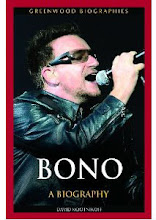
It's a little-known fact that Hong Kong enjoys the
highest per capita wine consumption in Asia. According to the
International Wine and Spirits Report (IWSR), each adult drinks more than 3.5 litres of wine a year, significantly ahead of Japan (2.5 litres) and Singapore (2 litres).

Hong Kong is regarded as the gateway to the booming Asian wine market, which amounted to US$6.94 billion in 2008 alone and is projected to grow by an average of 11.5 per cent annually until 2013. The IWSR predicts that for the next three years, 50 per cent of the world’s wine consumption will be in just two countries – China and the United States. The mainland and Hong Kong are clearly the growth driver for worldwide wine consumption.

While Italy is the largest wine-consuming country, followed by the United States and France, the mainland and Hong Kong are leading consumers of spirits in terms of volume. As for wine, China is eighth in the world and is projected to grow by 31 per cent by 2013.

Red wine is by far the leading choice among Asians. In Hong Kong, red accounts for 80.6 per cent of consumption, followed by white at 16.1 per cent and rosé at 3.3. per cent. Although consumption of sparkling wine grew sharply between 2004 and 2008, it only represented 3 per cent of the volume drunk in Asia. Spirit consumption is slowing down and is expected to grow by 2.9 per cent, with vodka leading the way, followed by tequila and then rum.

In Asia, one bottle out of four consumed is imported, accounting for 59.8 per cent of sales. Last year, Japan remained the leading wine importing nation in Asia. France continues to be the leading supplier in the region and one in three bottles sold in Hong Kong is of French origin. Between 2004 and 2008, French imports grew by 41.8 per cent, while Chilean imports rose by 170.5 per cent and sales of Australian and American wines doubled.
 What better place than "Ground Zero"? The construction of 13-storey mosque and Islamic cultural centre would be a slap in the face to terrorists on all sides of the religious spectrum. It would be tantamount to saying "No fear." The pathetic cowards who are trying to suggest that it would somehow be an affront to the victims of 9/11 are a disgrace to the values that created the founding documents of the grand ol' U.S. of A. One idiot actually went as far as to say on his radio program:
What better place than "Ground Zero"? The construction of 13-storey mosque and Islamic cultural centre would be a slap in the face to terrorists on all sides of the religious spectrum. It would be tantamount to saying "No fear." The pathetic cowards who are trying to suggest that it would somehow be an affront to the victims of 9/11 are a disgrace to the values that created the founding documents of the grand ol' U.S. of A. One idiot actually went as far as to say on his radio program:



































